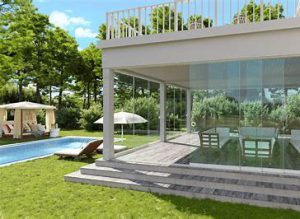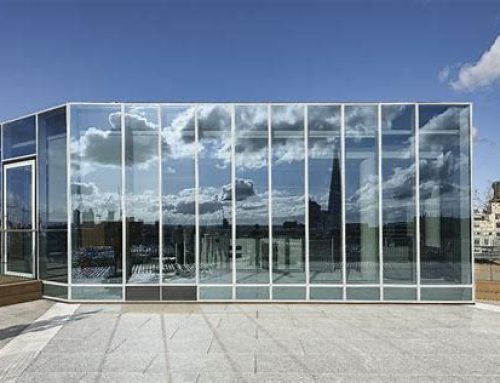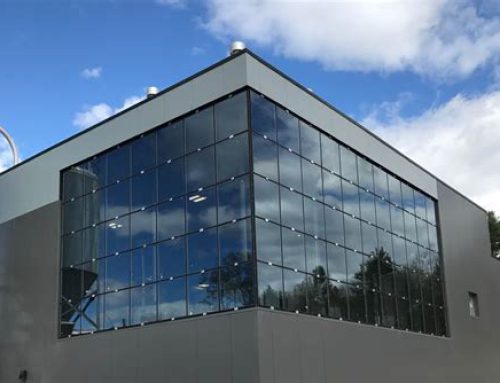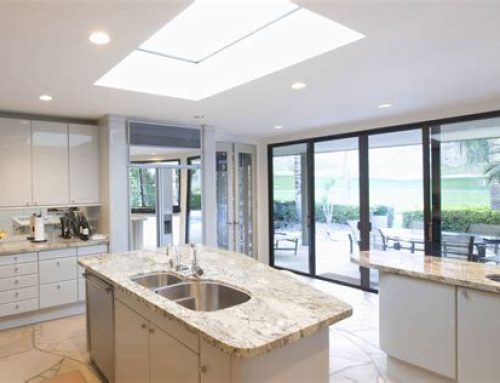Exterior frameless glass wall systems

Exterior frameless glass wall systems ,In the realm of contemporary architecture, the integration of innovative materials and design concepts continues to redefine the boundaries of what is possible. Among these pioneering elements, exterior frameless glass wall systems stand out as both functional and aesthetically captivating solutions. Offering seamless transitions between indoor and outdoor spaces, these architectural marvels not only enhance the visual appeal of a structure but also amplify its functionality and sustainability.
Aesthetic Elegance: Melding Nature and Architecture
One of the most striking features of exterior frameless glass wall system is their ability to dissolve the barrier between interior and exterior environments. By seamlessly integrating with the surrounding landscape, these walls create a sense of openness and fluidity, inviting natural light to flood the interior spaces and providing panoramic views of the outdoors.
The frameless design of these glass walls contributes to a sleek and minimalist aesthetic, allowing for uninterrupted sightlines and a sense of expansiveness. Whether used in residential, commercial, or institutional settings, these systems add a touch of sophistication and modernity to any structure, while also complementing various architectural styles and design preferences.
Functional Versatility: Enhancing Indoor-Outdoor Connectivity
Beyond their visual appeal, exterior frameless glass wall systems offer practical benefits that enhance the livability and functionality of a building. By facilitating a seamless connection between indoor and outdoor spaces, these systems promote cross-ventilation, natural airflow, and passive heating and cooling strategies, thereby reducing the reliance on artificial climate control systems and lowering energy consumption.
Moreover, the flexibility of these glass walls allows for customizable configurations to suit different spatial requirements and usage scenarios. Whether deployed as sliding panels, pivot doors, or fixed windows, they can adapt to the specific needs of a space, providing optimal functionality without compromising on design integrity.
Structural Integrity: Balancing Form and Function
Despite their delicate appearance, exterior frameless glass wall systems are engineered to meet rigorous structural requirements, ensuring both safety and durability. Advanced manufacturing techniques, such as laminating and tempering, enhance the strength and resilience of the glass panels, enabling them to withstand harsh weather conditions, seismic activity, and other external forces.
Additionally, the integration of high-performance sealants and weatherstripping ensures airtightness and watertightness, preventing moisture infiltration and maintaining interior comfort levels. With proper installation and maintenance, these systems can provide long-term reliability and performance, making them a sound investment for any architectural project.
Sustainability and Efficiency: Embracing Green Building Principles
In an era where environmental sustainability is a paramount concern, exterior frameless glass wall system offer inherent advantages that align with green building principles. By harnessing natural light and ventilation, they reduce the reliance on artificial lighting and mechanical HVAC systems, thereby lowering energy consumption and greenhouse gas emissions.
Furthermore, the use of recyclable materials and the potential for future reuse or repurposing make these systems environmentally responsible choices. When coupled with energy-efficient glazing options and strategic shading devices, they can further enhance thermal performance and mitigate solar heat gain, contributing to overall energy savings and occupant comfort.
Challenges and Considerations:
While exterior frameless glass wall systems offer numerous benefits, their implementation also presents certain challenges and considerations. One primary concern is the need for proper design and engineering to ensure structural stability and safety. Factors such as wind loads, seismic activity, and temperature differentials must be carefully accounted for during the planning and installation phases to prevent issues such as glass breakage or frame failure.
Additionally, the transparency of glass walls can raise privacy concerns, especially in densely populated urban areas or buildings with close proximity to neighboring structures. Design solutions such as frosted or tinted glass, strategic placement of interior partitions, or the incorporation of shading devices can help address these privacy issues while still preserving the desired aesthetic and functionality.
Maintenance and cleaning are also important considerations for exterior frameless glass wall systems, as exposure to outdoor elements can result in the accumulation of dirt, dust, and debris on the glass surfaces. Regular cleaning and inspection are necessary to ensure optimal performance and prolong the lifespan of the system. Moreover, the selection of high-quality materials and finishes can minimize maintenance requirements and enhance the system’s longevity.
Future Trends and Innovations:
Looking ahead, advancements in glass technology and building materials are poised to further revolutionize exterior frameless glass wall systems. Innovations such as electrochromic glass, which allows for on-demand tinting or opacity control, offer new opportunities for enhancing privacy, energy efficiency, and occupant comfort. Similarly, the integration of photovoltaic cells into glass panels enables the generation of renewable energy while maintaining transparency and aesthetic appeal.
Furthermore, the adoption of smart building technologies, including automated shading systems, climate control sensors, and remote monitoring capabilities, will enhance the performance and efficiency of glass wall systems. By intelligently responding to changing environmental conditions and user preferences, these technologies optimize energy usage, improve indoor comfort, and extend the lifespan of the system.
In terms of design trends, there is a growing emphasis on biophilic design principles, which seek to incorporate elements of nature into the built environment to promote health and well-being. Exterior frameless glass wall systems play a central role in this approach by fostering a strong connection to the outdoors and allowing occupants to experience the benefits of natural light, views, and ventilation.
Integration and Adaptation:
The integration of exterior frameless glass wall systems into architectural projects requires careful consideration of site-specific conditions and design objectives. Architects and designers must collaborate closely with structural engineers, glass manufacturers, and other stakeholders to develop customized solutions that meet the unique needs and constraints of each project.
Site analysis plays a crucial role in determining the orientation, placement, and size of glass wall systems to optimize solar exposure, views, and natural ventilation. Factors such as prevailing winds, solar angles, and adjacent structures influence the design decisions and performance of the system.
Moreover, the architectural language and overall design concept of the building must harmonize with the aesthetic and functional requirements of the glass walls. Whether seeking to achieve a minimalist, industrial, or organic aesthetic, the design team must balance form, function, and context to create a cohesive and compelling architectural expression.
Adaptability is another key consideration in the design of exterior frameless glass wall systems, particularly in response to changing environmental conditions and user preferences. The ability to open, close, or reconfigure the glass panels allows for flexible use of space and responsive design solutions that enhance comfort and usability.
Collaboration and Innovation:
The successful implementation of exterior frameless glass wall systems requires collaboration and innovation across disciplines. Architects, engineers, glass manufacturers, contractors, and other stakeholders must work together to address technical challenges, navigate regulatory requirements, and achieve the desired design vision.
Continuous innovation in glass technology, structural engineering, and building systems contributes to the evolution of exterior frameless glass wall systems, enabling architects and designers to push the boundaries of what is possible. From advances in glass coatings and laminates to new structural framing systems and installation methods, these innovations expand the design palette and enhance the performance and durability of glass wall systems.
Furthermore, interdisciplinary research and knowledge sharing foster a culture of innovation and excellence in architectural practice. Forums, conferences, and publications provide opportunities for professionals to exchange ideas, share best practices, and collaborate on research projects that advance the state of the art in glass architecture and design.
Conclusion:
In conclusion, exterior frameless glass wall systems represent a convergence of design, technology, and collaboration that redefines the possibilities of modern architecture. With their seamless integration of indoor and outdoor spaces, these systems create immersive environments that inspire, delight, and enrich the lives of occupants.
As architects and designers continue to explore new frontiers in glass architecture, exterior frameless glass wall systems will remain at the forefront of innovation, shaping the way we experience and interact with the built environment. Through collaboration, creativity, and a commitment to excellence, these systems will continue to transform the skyline and redefine the boundaries of architectural possibility for generations to come.





Leave A Comment